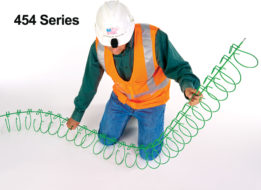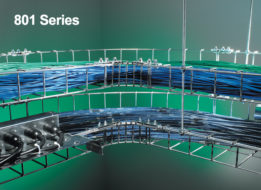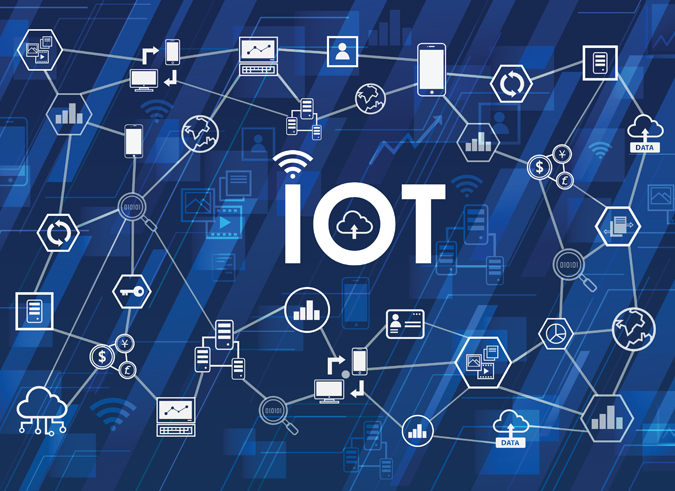The Internet of Things (IoT) is an enormous collection of sensors, gateways, switches, and routers embedded into other products or structures that merges the physical and the virtual worlds to create smarter environments. By Gartner Inc.’s count, there are as many as 26 billion devices currently connected to the IoT with no end in sight. The IoT helps businesses make better decisions, reduce waste, and save energy, either autonomously or after some analysis.
These “things” collect, transport, and exchange data with each other over the internet, usually with little human interaction, to allow spaces, processes, and objects to be remotely monitored and controlled in real time for optimal performance. Think security systems, factory equipment, building environmental and occupancy systems, wearable health monitors, traffic lights, and logistics tracking to name a few. For example, a sensor inside a piece of machinery can warn operators of impending failure before it occurs. Or the lights turn off and the temperature is adjusted automatically when a floor or office is sensed as vacant to save energy.
 In most cases, the sensors built into objects communicate wirelessly with other devices on the same network through a cellular, Wi-Fi, or Bluetooth connection. But at some point, there is a hardwired Ethernet connection to a router or server. Hardwired connectivity remains best for reliability, speed, and signal strength. That means cables, and cable management systems.
In most cases, the sensors built into objects communicate wirelessly with other devices on the same network through a cellular, Wi-Fi, or Bluetooth connection. But at some point, there is a hardwired Ethernet connection to a router or server. Hardwired connectivity remains best for reliability, speed, and signal strength. That means cables, and cable management systems.
It’s not just about the sheer volume of IoT devices, it’s about the massive amounts of data and the speed at which it is generated from constant monitoring. Businesses need to determine which data from simple actions stay local, and which performance-related data gets forwarded to the data center for processing and analysis. There are bandwidth, security, back-up, and storage capacity issues to deal with, in addition to the daily business traffic generated by non-IoT network activities.
As a result, there are two key technology trends where the IoT and cable management intersect: one is commercial “smart” buildings, the other is data center decentralization.
For the former, building automation and energy conservation systems such as room occupancy sensors, smart lighting, and  environmental controls contribute to a facility achieving LEED certification as a green building. Power over Ethernet (PoE) is another growing trend in smart building design. Low voltage carried over CAT 5/6 data cables enables IP addressable LED lighting. That means architects and engineers need to plan for the hundreds of additional IoT sensors, devices, and LED lighting fixtures (and the cables that connect them) in a commercial building.
environmental controls contribute to a facility achieving LEED certification as a green building. Power over Ethernet (PoE) is another growing trend in smart building design. Low voltage carried over CAT 5/6 data cables enables IP addressable LED lighting. That means architects and engineers need to plan for the hundreds of additional IoT sensors, devices, and LED lighting fixtures (and the cables that connect them) in a commercial building.
For the latter, the sheer volume of IoT data and the magnitude of connections threatens to overwhelm the centralized data center. Latency issues arise in networks where devices are distributed globally, impacting performance. To meet this challenge, many enterprises and service providers are moving toward a network of multiple distributed micro data centers where initial processing occurs at the Edge, closer to the point of data access/generation. Only relevant data is forwarded to a central site for additional processing. But even in these smaller data center environments, the number of  connections to servers and routers is exponentially greater than it was just a few short years ago due to the growth of IoT devices. Efficient cable management solutions are needed to support fast implementation at minimal cost.
connections to servers and routers is exponentially greater than it was just a few short years ago due to the growth of IoT devices. Efficient cable management solutions are needed to support fast implementation at minimal cost.
The hand-bendable Snake Tray 101, 201 and 454 Series are prefabricated yet flexible subsystems designed to  speed construction and reduce costs; great for running organized data, PoE, and fiber optic lines overhead or underfloor. The premanufactured 801 Series Mega Snake (Figure C) combines the strength of steel ladder with the flexibility of wire basket to handle loads up to 150 lbs. per linear foot. (And yes, we have steel and aluminum ladders, too.) Eliminate on-site cutting, grinding, and the need for special tools while ensuring proper spacing, turn radii and support for high and low voltage cables. Easily manage changes,
speed construction and reduce costs; great for running organized data, PoE, and fiber optic lines overhead or underfloor. The premanufactured 801 Series Mega Snake (Figure C) combines the strength of steel ladder with the flexibility of wire basket to handle loads up to 150 lbs. per linear foot. (And yes, we have steel and aluminum ladders, too.) Eliminate on-site cutting, grinding, and the need for special tools while ensuring proper spacing, turn radii and support for high and low voltage cables. Easily manage changes,  make repairs, and build in room for growth. Plus, Snake Tray products nest together for compact and cost effective shipping and material handling on the job site.
make repairs, and build in room for growth. Plus, Snake Tray products nest together for compact and cost effective shipping and material handling on the job site.
Whether you are designing a commercial smart building or a micro data center, Snake Tray has the IoT cabling solutions need to help you manage the complexity of the IoT. Contact us to learn more about how Snake Tray can you save time and money on your next construction project.
Snake Tray has revolutionized the data and power distribution market with cable management, power distribution systems and enclosures all designed to install quickly, reduce labor and material costs, and significantly drive down the total cost of construction. If you would like to learn more, visit us at snaketray.com. Our engineers and sales teams stand ready to help execute your next cabling project with maximum efficiency and profitability.

